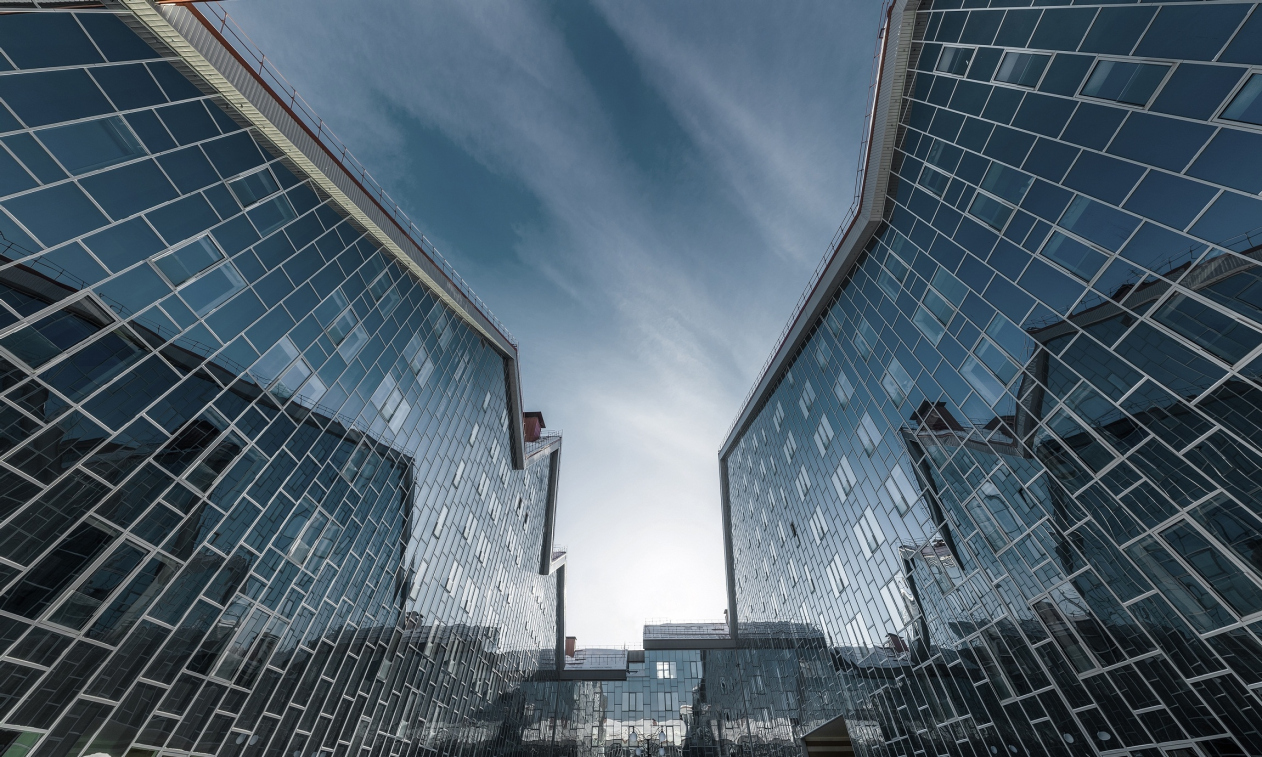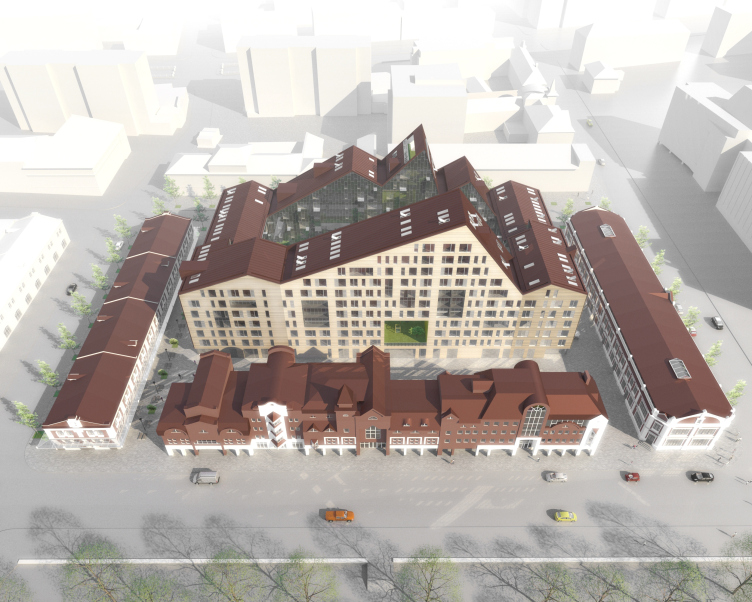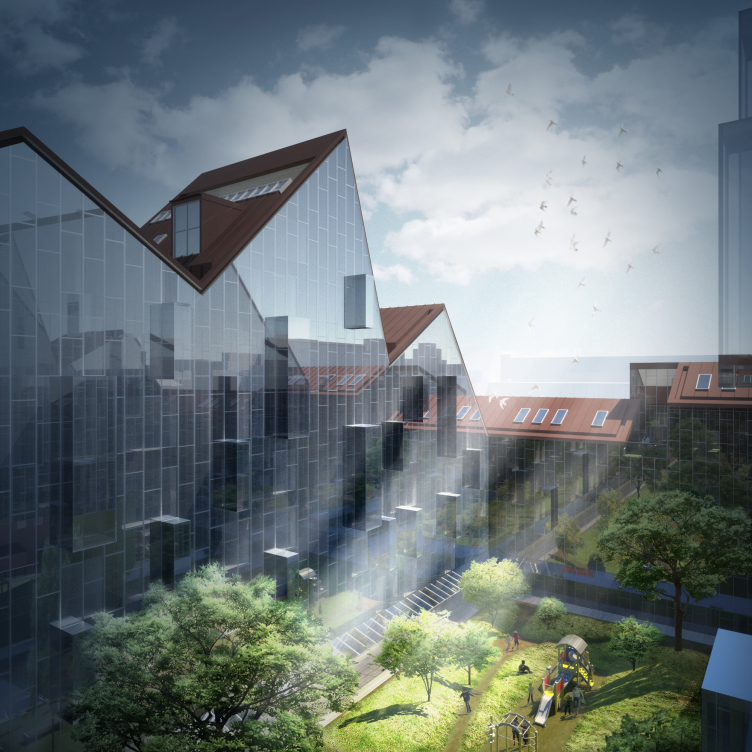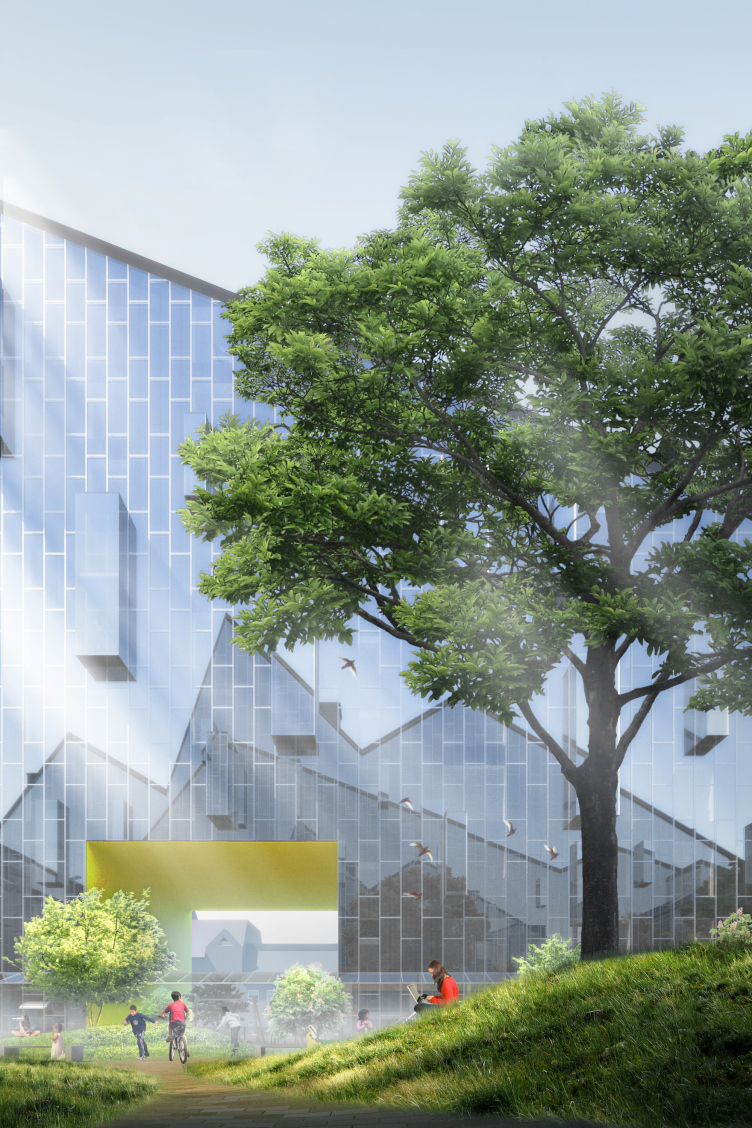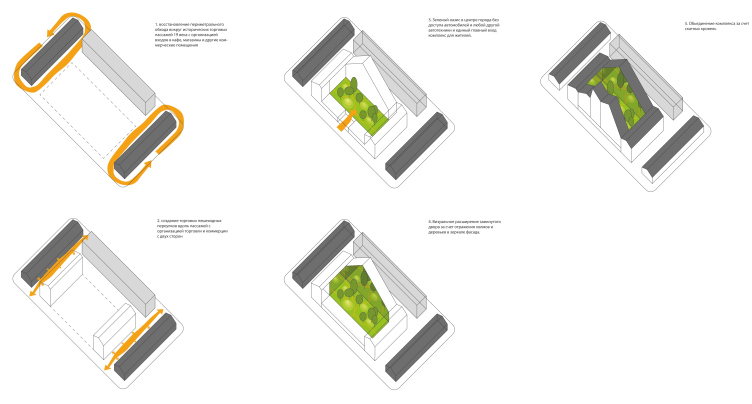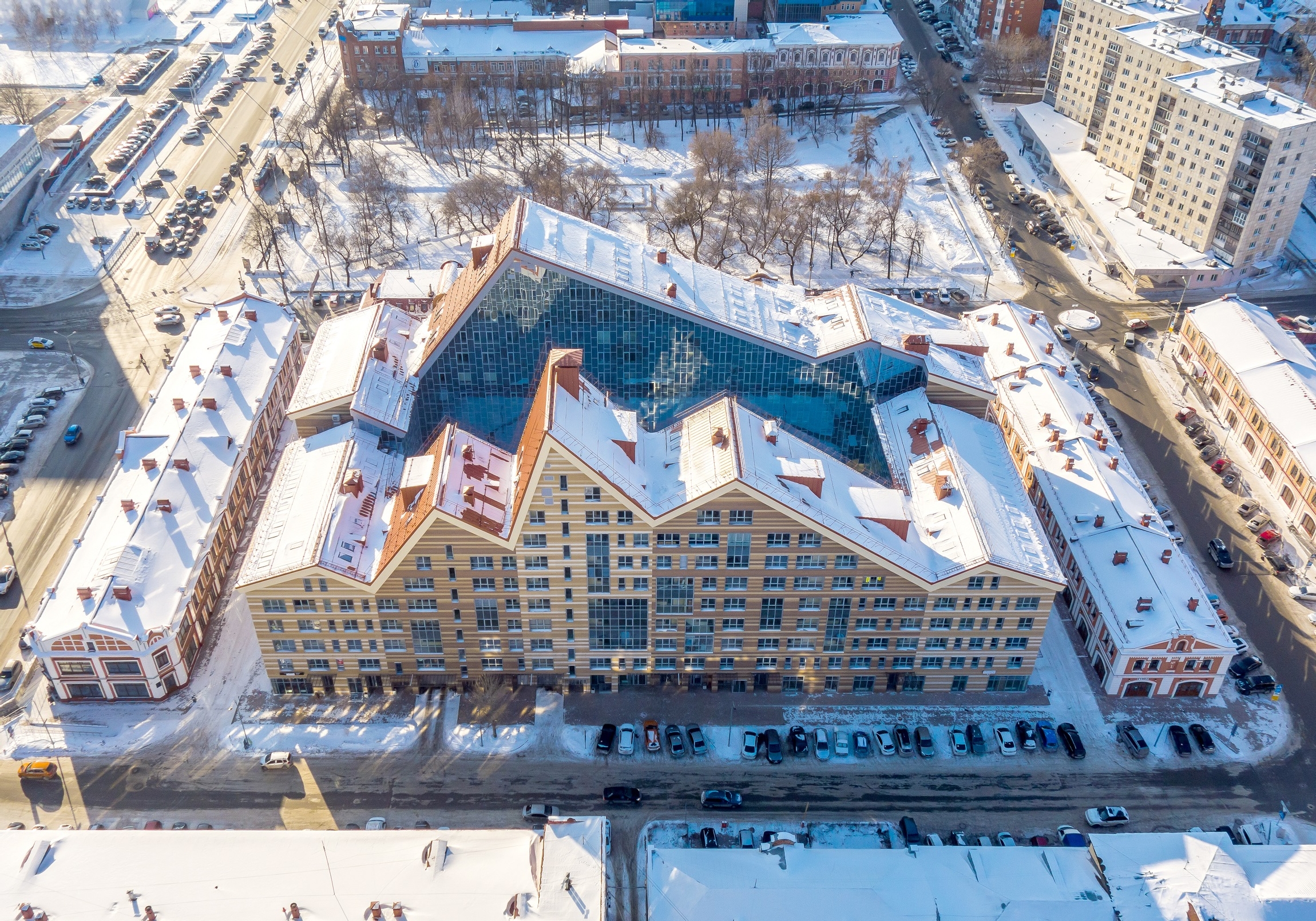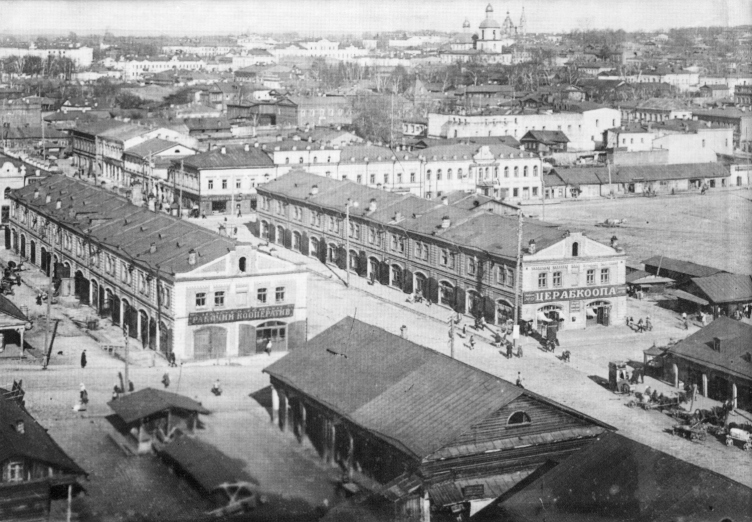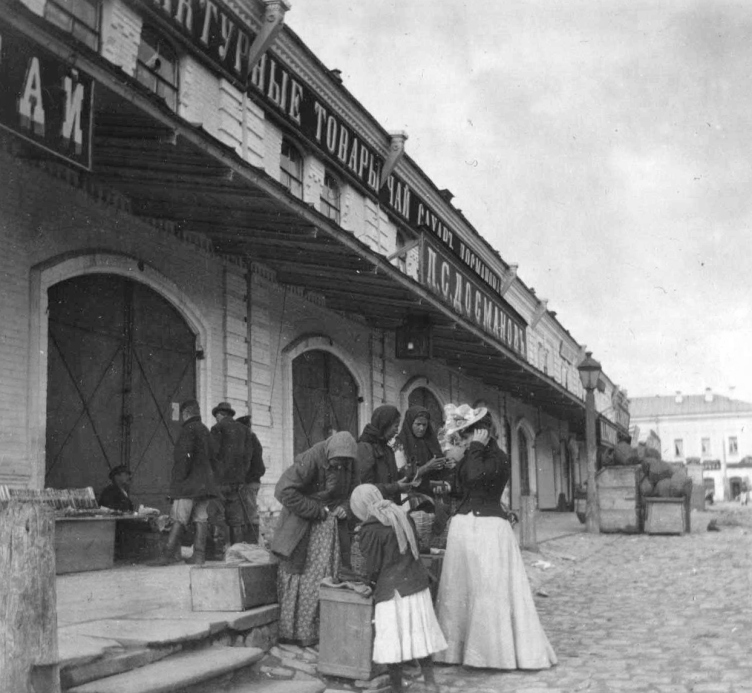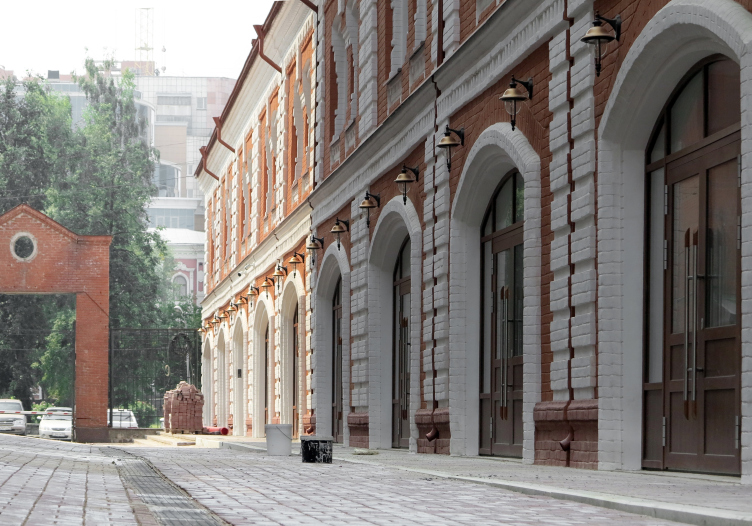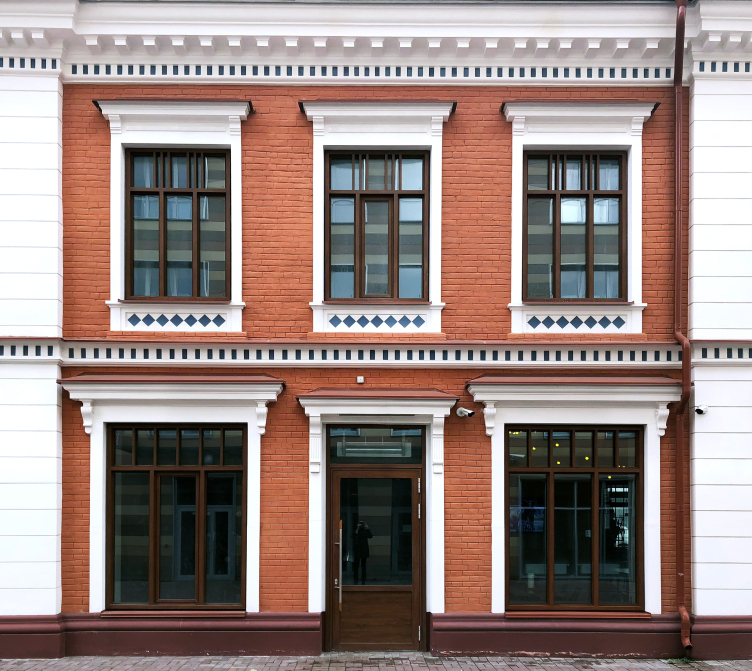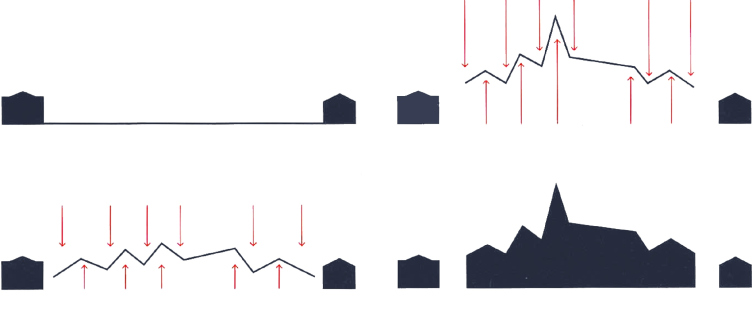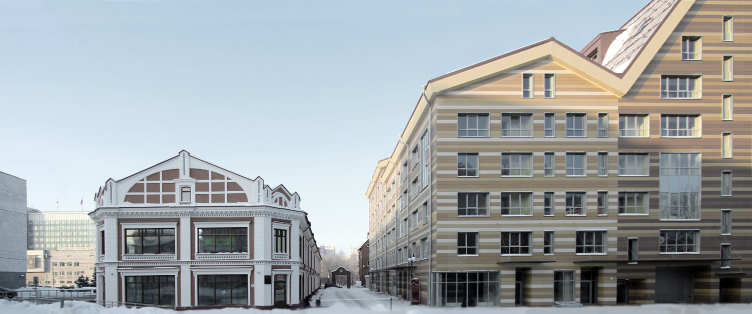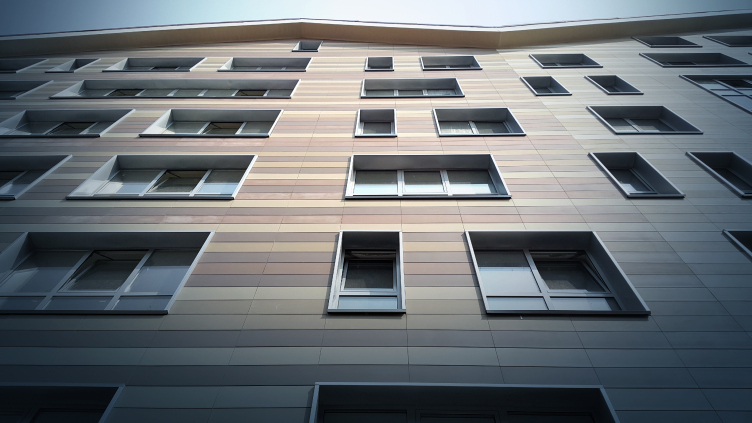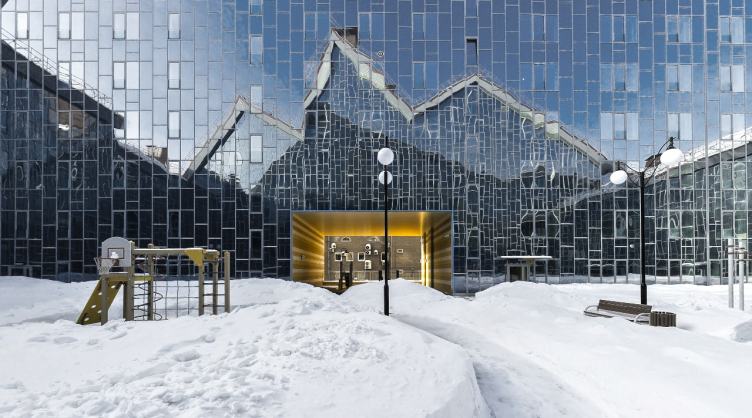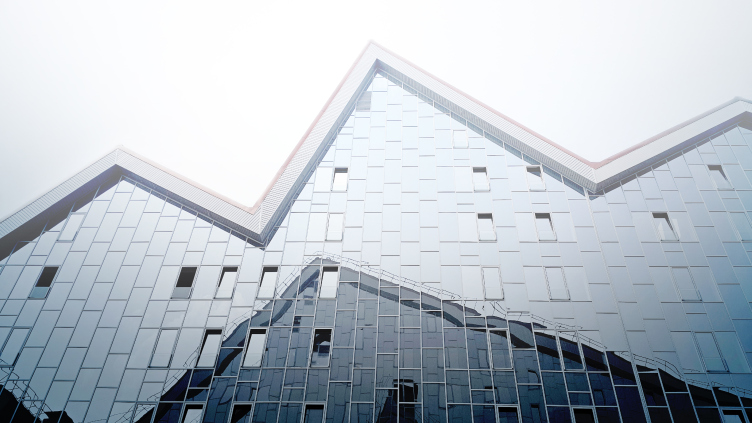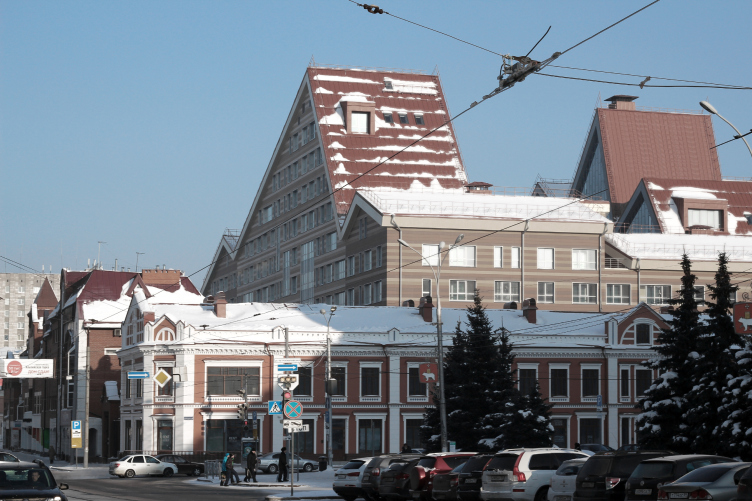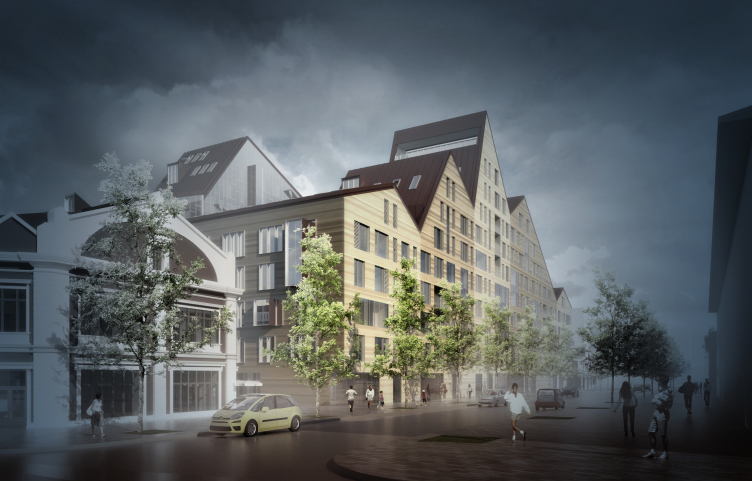The housing complex ASTRA received lots of architectural awards, and quite deservedly, too – the complex is full of original ideas and it boasts a clear-cut volumetric composition. In addition, one can feel quite the metropolitan grandeur about it. Anton Barklyansky was born in Perm and went to the university of Ekaterinburg but he has already worked in many Moscow’s and overseas architectural firms. And, as far as the city of Perm is concerned, during the governorship of Oleg Chirkunov it was at the frontier of the modern architecture and urbanism. The master plan designed by the Dutch firm KCAP, the international competition for the project of the museum of modern art PERMM with the participation of Peter Zumthor, and other architectural events going on in this city created a favorable informational context, into which ASTRA fit in nicely with its Dutch-Scandinavian flavor.
ASTRA housing complex and the reconstruction of Perm's shopping arcades of the XIX century. SYNCHROTECTURE © Provided by the architects
ASTRA housing complex and the reconstruction of Perm's shopping arcades of the XIX century. SYNCHROTECTURE © Provided by the architects
ASTRA housing complex and the reconstruction of Perm's shopping arcades of the XIX century. SYNCHROTECTURE © Provided by the architects
The SYNCHROTECTURE architects believe that there are at least three things, of which ASTRA can be proud. The first one is its town-planning solution: building in a historical center of the city a rather large housing project, inscribing it into the existing panorama, and meeting the useful floor space requirements is quite a feat in itself. The second thing is of a social nature: the architects were able to keep this land site accessible to the city people who will enjoy its beauty – for this, along the historical passages they have routed some pedestrian streets.
Anton Barklyansky: “The first and the main question that we needed to answer was the town-planning challenge: how can you place something big in a place like this? Then we asked ourselves what this place would give the future residents of the complex and to the city people”.
ASTRA housing complex and the reconstruction of Perm's shopping arcades of the XIX century. SYNCHROTECTURE © Provided by the architects
The elite ASTRA housing complex and the reconstruction of shopping arcades of the XIX century © Synchrotecture
The land site is located in the center of Perm, in the stead of the former “Black Market” named like this because it had to be cleared from swamp soils. The plan of the center of the city was drawn up in 1784 by the architect Ivan Lem who worked in the Building Committee of Saint Petersburg and promoted spreading regular city plans of Catherine of Russia classicism all across the nation. On the old drawings, it really looks like Manhattan: regular city blocks dissected into lots. The two historical buildings of the late XIX century designed by the architect Vasily Potapenko are precisely inscribed into such a block, forming its sides. They are considered to be the monuments of architecture. Originally, this place was occupied by shopping arcades with a perimetral go-around: shops in the first floors with offices and storages above them. In the Soviet times, these buildings hosted a print works and a tobacco factory, the whole territory of these blocks being occupied by annexes built later on. The yard façades got obscured by the new buildings, many arches were stopped with bricks, and the brick walls were painted over.
Shopping arcades, Perm. A historical photograph. Courtesy by SYNCHROTECTURE
Shopping arcades, Perm. A historical photograph. Courtesy by SYNCHROTECTURE
Anton Barklyansky: “In any case, these monuments of architecture were nothing but an encumbrance for the developer. Reconstruction is more expensive that building from scratch – but our client was prepared for that. We opened the perimetral go-around, restored the apertures, reformed the buildings to meet today’s emergency evacuation requirements, and designed a few extra staircases, yet in such a way that they are not visible from the outside. We also restored the divided glazing pattern. We handled the work on these passages from beginning to end, and we insisted on historically accurate restoration of the brickwork, controlling every stage of the process”.
ASTRA housing complex and the reconstruction of Perm's shopping arcades of the XIX century. SYNCHROTECTURE © Provided by the architects
ASTRA housing complex and the reconstruction of Perm's shopping arcades of the XIX century. SYNCHROTECTURE © Provided by the architects
ASTRA housing complex and the reconstruction of Perm's shopping arcades of the XIX century. SYNCHROTECTURE © Provided by the architects
The reconstruction of the passages increased the value of the territory. As for the main task, it consisted in building a residential house on a land site between two passages and an office brick building of the 1990’s. Considering the fact that this is a historical zone, and not far away stands the Cathedral of the Transfiguration of the Saviour with a belfry (an architectural monument of federal importance), the architects did a visual landscape survey. “Together with the center for monument protection, we checked out the vantage points where you cannot block the view of the cathedral in the panorama of the city – Anton says. And this is where the main insight came, which was the silhouette of the roof”.
ASTRA housing complex and the reconstruction of Perm's shopping arcades of the XIX century. SYNCHROTECTURE © Provided by the architects
“There are gable roofs of the passages, and, using them as a starting point, we are gradually moving upwards, keeping the dialogue with history at the expense of the roofs of the residential building. This is a modern shape but there is also a dialogue with history about it. This is an idea that’s seriously cool. On the scheme, the skyline looks pretty much like the traffic sign with the pictogram of the city. And, mind, this is a traditional town with a cathedral’s spear towering above it. Gabled roofs generally look better in a historical environment than flat ones. And in our case – which came as a pleasant surprise – they also yielded the maximum output of useful floor space. And this means that other architects can follow in our footsteps”.
The multigabled roof of ASTRA turned out to be ambivalent: if you look at it from the city side, you immediately feel the connection with the skyline of the historical roofs, and of you look at it from the yard side, it looks like a mountain silhouette. The structure of the roof is executed from reinforced concrete. In order to avoid the risk of getting leaks at the bends, the architects provided for water catch and heating the roof. Originally, it was planned that the roof would be there in the plane of the façade with a small water gutter running along its perimeter. The overhang of the roof was not originally planned but, as it often happens in the process, popped up along the way.
The façade is decorated with tiles of several shades of sand that creates an effect of a “living” natural surface.
ASTRA housing complex and the reconstruction of Perm's shopping arcades of the XIX century. SYNCHROTECTURE © Provided by the architects
ASTRA housing complex and the reconstruction of Perm's shopping arcades of the XIX century. SYNCHROTECTURE © Provided by the architects
The yard, which looks like a mountain meadow among the rocks, is the veritable gem of the project. Originally, it was designed as being filled trees, which would be reflected from top to bottom (!) in the glass façades. This way, the complex would get a natural architectural space for meditation. In Norway, people in the evenings just sit around watching the forest – this is a national tradition. The architects have been unable (so far) to implement all the plans concerning the trees and the terrain formation but the mirror façades are already visually enlarging the comparatively small yard thanks to a myriad of reflections. In addition, the lines of the roof of the two opposite blocks have different shapes, and these silhouettes get curiously bent in the reflections. In order to make the yard vehicle-free and make the access for all vehicles (including emergency ones) only from the outside of the building, the architects carefully thought out the floor plans, making sure that all of the apartments have an access to the outside perimeter. The floor plans range from studios and double room apartments to apartments with terraces on the roofs and mansard windows.
ASTRA housing complex and the reconstruction of Perm's shopping arcades of the XIX century. SYNCHROTECTURE © Provided by the architects
ASTRA housing complex. The stained glass windows in the space of the yard. Photograph © Dmitry Shardakov
ASTRA housing complex and the reconstruction of Perm's shopping arcades of the XIX century. SYNCHROTECTURE © Provided by the architects
ASTRA housing complex and the reconstruction of Perm's shopping arcades of the XIX century. SYNCHROTECTURE © Provided by the architects
To recap – there are several important ideas implemented ASTRA: the multigabled roof (also known as “hip-and-valley roof”), which can arguably be patented as the “Barklyansky Skyline”, fracturing of the overall volume into several parts of different height, a vehicle-free “oasis” yard with mirror façades and territory valorization. But I think the roof steals the show.
ASTRA housing complex and the reconstruction of Perm's shopping arcades of the XIX century. SYNCHROTECTURE © Provided by the architects
The image of the building that sports an old-fashioned multigabled roof in combination with modernist plastique of the façades is quite sustainable, and it could one day end up being the design mainstream for our cities because such buildings have a historical memory, and they are guaranteed against the symbolic poverty of most modern buildings. And it was for a good reason that SYNCHROTECTURE used their signature multigabled roofs in another Perm project of theirs, also connected with the historical context. These hip-and-valley roofs could one day form the city fabric that the modern architecture has so far been unable to create – but the trend for it is there.

